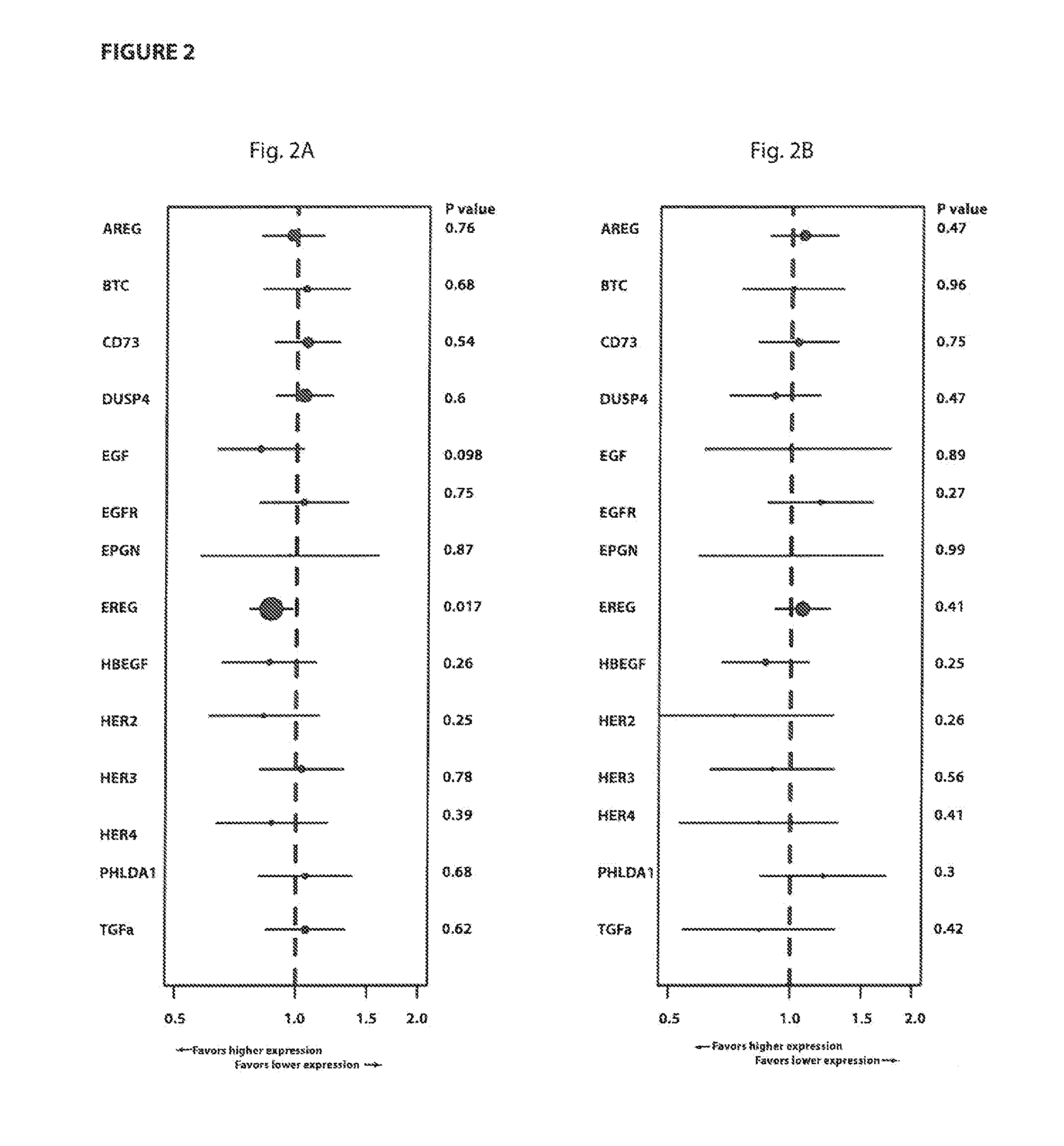Methods of predicting responsiveness of a cancer to an agent and methods of determining a prognosis for a cancer patient
- Summary
- Abstract
- Description
- Claims
- Application Information
AI Technical Summary
Benefits of technology
Problems solved by technology
Method used
Image
Examples
example 1
Gene Expression Markers of Efficacy and Resistance to Cetuximab Treatment in Metastatic Colorectal Cancer
Patients and Methods
Study Design and Patients
[0092]CALGB 80203 was a randomized phase II study of patients with colorectal cancer (CRC) treated using chemotherapy (either FOLFOX or FOLFIRI) with or without the addition of cetuximab. Cetuximab is a monoclonal antibody that binds epidermal growth factor receptor (EGFR) and competitively inhibits its interaction with epidermal growth factor (EGF). EGFR is overexpressed in 50-80% of colorectal tumors. This trial was designed to test whether the addition of cetuximab to chemotherapy regimens could improve treatment outcomes in CRC. Early findings of this study showed equivalent responses for FOLFIRI and FOLFOX therapies in first-line treatment of metastatic colorectal cancer (Venook, 2006). Preliminary results indicate an improved response rate of 52% in patients receiving cetuximab over 38% of patients that did not receive cetuximab ...
example 2
Blood-based Markers of Efficacy to Cetuximab Treatment in Metastatic Colorectal Cancer
Patients and Methods
Study Design and Patients
[0110]Design details of the CALGB 80203 study are described above in Example 1. Patients with previously untreated, advanced or metastatic adenocarcinoma of the colon or rectum were assigned to FOLFIRI, FOLFIRI plus cetuximab, FOLFOX, or FOLFOX plus cetuximab treatment groups. This was a multi-center trial approved by the institutional review boards at each participating institution, and all patients gave written informed consent before enrollment.
[0111]Plasma from 154 patients was collected and the amount of soluble EGFR related proteins in their plasma was directly interrogated using ELISA-based techniques (FIG. 9). Characteristics of the 154 patients tested are shown in Table 5. Peripheral venous blood was collected at baseline from consenting patients into lavender (EDTA anticoagulant) vacutainers. Samples were centrifuged at 2500×g ...
PUM
| Property | Measurement | Unit |
|---|---|---|
| Electrical resistance | aaaaa | aaaaa |
| Responsivity | aaaaa | aaaaa |
| Level | aaaaa | aaaaa |
Abstract
Description
Claims
Application Information
 Login to View More
Login to View More - R&D
- Intellectual Property
- Life Sciences
- Materials
- Tech Scout
- Unparalleled Data Quality
- Higher Quality Content
- 60% Fewer Hallucinations
Browse by: Latest US Patents, China's latest patents, Technical Efficacy Thesaurus, Application Domain, Technology Topic, Popular Technical Reports.
© 2025 PatSnap. All rights reserved.Legal|Privacy policy|Modern Slavery Act Transparency Statement|Sitemap|About US| Contact US: help@patsnap.com



